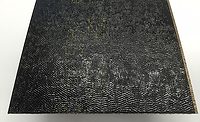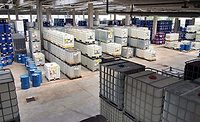Models, training bikes, engines – you can make pretty much anything with 3D printing. But few people know that even the Aston Martin DB5 used in the 23rd James Bond film,"Skyfall," came out of the printer. And Evonik polymers are what made it possible.
The final scenes of the film, injured and worse for the wear, James Bond takes refuge in the Scottish highlands. There, he entrenches himself (along with M, the head of the Secret Intelligence Service) in an old manor house and waits for his adversary to attack. The villain approaches with a helicopter, bombs the estate, and, in the process, destroys Bond’s silver Aston Martin. One of 007’s cars was auctioned off for roughly $2 million in 2006; doesn’t it hurt to just blow up an expensive car like that for a movie? "Don’t worry," grins Tobias Reinold, the Systems Director at voxeljet, one of the leading providers of industrial 3D printing technology. "No Aston Martins were harmed to make this film. We made three models of the car in Friedberg in Bavaria, Germany; we printed them, to be precise." Printing a car? How does that work? The answer is simple: with the powder-binder jetting process, a form of 3D printing. Assembly and the painstaking detail work on the model cars were done later at Propshop at Pinewood Studios in the UK.
Printing on Powder Instead of on Paper: The Magic Box is what does it
3D printing is an umbrella term covering an array of manufacturing processes. Using printers it produces in house, voxeljet applies the powder-binder jetting technique for processing Evonik polymers, which the company receives in large drums as a white powder. But how do they turn that into a car? It all begins with an empty box. As Tobias Reinold explains, they use special adhesives to turn razor-thin layers of powder into the final shape. "Imagine cutting a car into a thousand little slices no thicker than a sheet of paper." In a process lasting several hours, these slices are then bonded together, one layer after another. The bottom of the box then moves downward one millimeter at a time as the model grows upward. When the process is complete, a coworker opens the box, carefully removing the unbound powder particles with a vacuum cleaner. And there you have it: a shape emerges, still half covered in white powder. What could it be? Reinold can tell by just giving it a quick glance:
"It’s a mold for a car engine part." Production cycles are growing shorter and shorter, and customer demands are becoming increasingly specialized, especially in the automotive industry. Classic production methods are quickly reaching their limits. "We can do in just a few days what would otherwise take 10 weeks."
Small but Smart: Polymers Developed Especially for 3D Printing
3D printing puts considerable demands on the material used. The quality of the particles processed must be constant, and flowability must be perfectly matched to the printer. "That’s the only way we can be sure that the layers will print uniformly," explains Dr. Dirk Poppe, Global Marketing Manager Medical & Ceramics at Evonik. These sophisticated demands posed a considerable challenge for the research team: "The properties of the powder we had to develop for voxeljet were really unique." After nearly a year of research, the team could see what had to be done to make everything flow well for voxeljet. "With Evonik’s help we took an important step in the optimization process," says Reinold, praising the effort. And where do they go from here? "When we started out, there were only a few specialists working with this technology," the voxeljet Systems Director points out. "Now the process is being used for broader and broader applications."
Unlike 3D printing on small machines for private use, powder-binder jetting technique will likely remain an industrial process. But whether the result is a hand prosthesis, a replacement part for classic cars, or a printout of mathematical equations, the creativity knows no bounds. "The film industry is definitely our most interesting customer," Reinold happily observes. "We’ve used Evonik materials for other movies too." You just never know where you might find Evonik.








